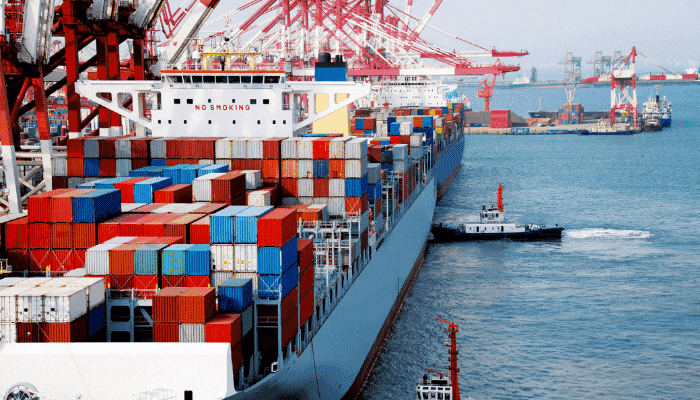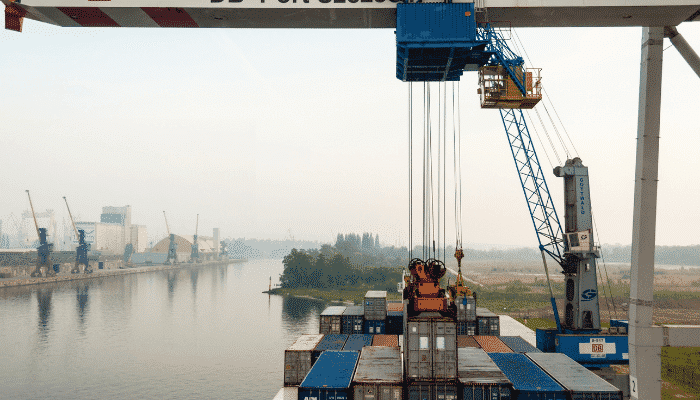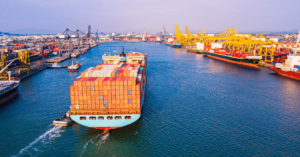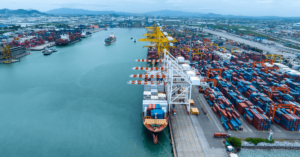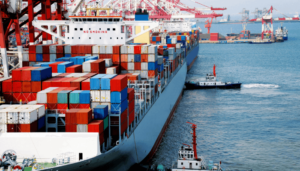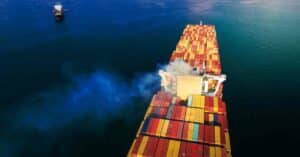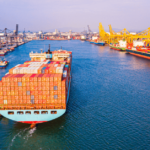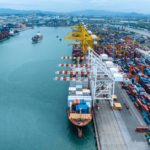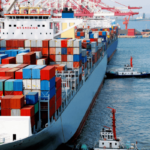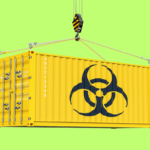Causes and Consequences Of Vessel Delays in Container Shipping
Maritime transport is crucial for international trade, as it carries over 90% of the world’s goods. As per World Economic Forum statistics, approximately 60% of this is transported in containers.
Considering the overwhelming reliance of global transport on the shipping industry, there is always a lot of focus on the reliability of shipping services.
Container shipping, in particular, is under the spotlight at the moment, given that since Covid started wreaking havoc across the world in 2020, vessels have been constantly delayed and carriers have for the most part been unable to adhere to their published sailing schedules.
The average reliability of container shipping lines has historically hovered around the 66% mark, implying that only 2 in 3 vessels arrive as per schedule; a number that would be considered unacceptable in most other industries.
Over the past year, in the Covid and post-Covid scenario, even this low benchmark has become a pipe dream, with the container shipping industry’s overall schedule reliability levels having fallen through the floor, recording an abysmal 33% in August 2021.
This is all the more surprising, considering that timely delivery in most cases is defined as being “plus or minus 1 day from the scheduled date of the call (at the port)”.
What this effectively means is that Container Carriers already have an error margin of 2 days, without the vessel call being counted amongst the delayed ones.
Being perhaps the most visible element of the transport chain, a lion’s share of the blame for these delays is attributed to Container Carriers; however in reality there are a host of diverse factors at play, all of which either singly or in combination with other factors, contribute majorly to the tardy pace of delivery.
In this article, we will examine the most common causes of poor schedule reliability, and vessel and delivery delays.
Causes Of Vessel Delays
Weather
The weather is perhaps the most important reason for disrupted schedules. Vessels sailing on the high seas are exposed to the vagaries of weather through most of their journey. Any adverse weather conditions such as hurricanes, storms etc will delay the vessel and cause it to arrive beyond its scheduled time.
Even while at berth, if climatic conditions are rough, loading and unloading activities will be suspended, causing a delay in the vessel leaving the port, thus prolonging its journey to the subsequent ports of call.
Peak Season
There are certain times of the year when consumer demand for goods and products is much higher than usual. This is typical during festival season and translates into higher volumes and places greater strain on carrier capacity and cargo handling infrastructure at ports.
At such times, due to the heavier than usual flow of cargo, ports take longer to handle vessels, leading to longer port stay for vessels, which in turn delays the vessels waiting in the queue behind them, ultimately cascading into delays at subsequent port calls.
There is no standard or uniform peak season for ports globally. The Peak Season differs from port to port, country to country and region to region.
For example, North American and European countries see a heavy rush of cargo traffic prior to Christmas, while Middle Eastern countries see a similar spike in volumes in the months preceding Eid.
Likewise, Chinese ports see a huge surge in export volumes in the buildup to the Chinese New Year (CNY), as overseas retailers and shippers front-end imports from Chinese factories, before the factories close for the CNY.
Blank sailings
During times of low demand (such as during the Chinese New Year) or immediately following the peak season, there is not sufficient cargo to fill ships, wherefore Carriers cancel a few sailings on the affected trade lanes, and fill available cargo in the remaining vessel sailings.
This is referred to as blanking sailings, which though helping carriers save on the variable costs for that particular voyage, has a direct impact on schedule reliability and transit delays.
Port call omissions
When a particular port is congested or cargo handling and evacuation is exceptionally slow, Carriers sometimes take a decision to omit that particular port and proceed directly to the next scheduled port of call.
This is known as port call omission, where the containers destined for the omitted port are then discharged at the next port and transported back to the omitted port (the original destination) through alternate modes of transport (rail, feeder vessels, truck).
This has an adverse impact on schedule reliability and cargo delivery times.
Labour shortage/ unrest
In countries where labour unions are strong, we sometimes see situations where labour unrest leads to delays in handling vessels, which impacts all vessels calling at the port, throwing schedules haywire and resulting in massive delays and pile-ups.
One such frequent occurrence is at the US West Coast ports, where the Longshoremen’s union signs 10-year contracts with Port Authorities and we generally witness friction between the Union and Port Operators regarding the renewed terms, at the end of each 10-year cycle.
Congestion at Ports
This is something of a chicken and egg situation, where poor reliability is one of the causes of congestion at ports, with the congestion impacting port operations and evacuation of cargo to the final destination, which in turn causes delays in berthing and handling vessels, worsening schedule reliability.
In exceptional times such as peak season or due to typical causes such as labour trouble, poor hinterland connections etc, congested ports will further exacerbate the poor schedule reliability and add to the already delayed transit times.
Congestion at landside/ delays in the evacuation of containers
At times, it might happen that ports are efficiently managed and handle container vessels in good time, but hinterland connections are either poor or unreliable, which can cause delays in shifting the container out of the port premises and onwards to their final destination.
In such cases, containers will rapidly pile up at the port storage yard, pressuring allocated storage space, due to which the port will not have adequate space to unload and store containers from forthcoming vessels, causing delays in handling the subsequent vessels.
Such landside delays will aggravate the schedule reliability and lead to prolonged transit times.
Hold-up/ delays in Customs/ other Government offices
Sometimes the time taken by Customs and Government agencies to inspect and pass the container might be longer than usual or more than anticipated. This could be caused by a number of factors such as very stringent checking of cargo and containers, additional checking due to information about contraband being transported, lack of manpower, lengthy bureaucratic processes etc.
This will increase the time taken to clear containers, delaying both the import and export process, cause longer dwell times at the port storage areas, compel carriers and cargo owners to allocate more time at the port to accommodate all containers (and avoid the risk of containers missing their planned vessel call); all of which will negatively impact schedule reliability.
Connection/ Feeder vessel delays at transhipment ports
With the growing prevalence of the hub and spoke model in container shipping, a development that has been precipitated by the introduction of increasingly bigger vessels, we effectively have introduced yet another link in the maritime transport chain. Consequently, schedule reliability and delivery times have one more handover point, which can potentially cause delays.
If the feeder connections serving the transshipment hub and smaller feeder ports in the region are inadequate or unreliable, there could be considerable delays in the final leg transportation.
Inadequate infrastructure at ports
The Ports industry is a capital intensive one, with a massive amount of investment required upfront – for procuring land, construction and draught, purchasing cranes and other container handling equipment, systems, security systems and processes, trained manpower etc – which often act as a barrier to entry.
Often, port authorities have the basic infrastructure in place but lack the resources to upgrade their facilities and infrastructure to keep pace with rising container volumes and upsized vessels calling at their shores.
In such cases, this inhibits the ability of the port to effectively handle vessels calling at the port, with the result that they take longer to load and unload containers, which in turn causes vessel delays and impacts schedule reliability and delivery times.
Bunker optimization and slow steaming by Carriers
Bunker costs comprise the biggest item amongst Operating Expenses for all Container Carriers. With cutthroat competition and wafer-thin margins, Carriers are forced to focus rigorously on costs and try to rationalize wherever they can.
As the highest contributor to OPEX, the bunker is obviously a key area for Carriers, and they resort to innovative tactics to reduce bunker consumption.
One such initiative involves slow steaming, where the vessels sails at a speed far slower than usual. Since the bunker consumption increases in exponential proportion to the sailing speed, the benefits of slowing down are immediate and substantial, wherefore all Carriers have adopted slow steaming as a matter of policy.
New builds are nowadays specially designed for optimal consumption of bunker and with modifications ensuring that they are best suited for sailing at slow speeds.
Holidays at ports
This is primarily a seasonal and local phenomenon, wherein on account of local holidays, ports lack the manpower required to handle all the vessels that are scheduled to call at the port.
Examples include Ramadan working hours at Middle Eastern ports, where the reduced working hours at the ports cause Carriers to add some buffer time to their sailing schedules, which directly impacts their schedule reliability and increases overall transit times.
Covid-induced lockdowns
This is the latest and perhaps the most well-known cause of schedule disruptions, having had such a widespread effect that even laymen have become aware of this.
As entire countries and ports are under lockdown to prevent the spread of Covid, vessels are forced to omit those ports/ countries, besides having to discharge their containers at alternate ports, which disrupts vessel schedules and impacts reliability.
Consequences of Vessel and Cargo delays
The implications of vessel and cargo delays and poor schedule reliability are manifold and impact both the commercial and operational aspects of the businesses of all players in the supply chain, some of which are enumerated below:
1) Increase in TCO: The delays increase the overall cost of ownership, on account of the higher charges incurred due to delays
2) Delayed sales and manufacturing: if the container contains raw material destined for a manufacturing plant, production can be held up if delivery is delayed. Likewise, in the case of a container carrying finished goods, the sale to the importer or final consumer will be delayed.
3) Money tied up in inventory and lower cash flows: The more the container is delayed, the longer it will take to liquefy the cargo, which means more money tied up in inventory and slower cash flows.
4) Increased risk of damage, pilferage, spoilage and obsolescence: The longer cargo stays in transit, the more it is exposed to the risk of damage or pilferage. In the case of time-sensitive cargo, such as perishables, delays could reduce the value of the cargo and hence its selling price.
5) Lower asset turnover: The longer it takes to deliver a container, the fewer times it can be turned over, indicating suboptimal usage of assets. The same holds true for the cargo carried in the container.
You might also like to read:
- Lesser Known Surcharges in Container Shipping
- What Are Common Freight Surcharges and Accessorial Fees in Container Shipping?
- 10 Largest Container Shipping Companies in the World in 2022
Disclaimer: The authors’ views expressed in this article do not necessarily reflect the views of Marine Insight. Data and charts, if used, in the article have been sourced from available information and have not been authenticated by any statutory authority. The author and Marine Insight do not claim it to be accurate nor accept any responsibility for the same. The views constitute only the opinions and do not constitute any guidelines or recommendations on any course of action to be followed by the reader.
Do you have info to share with us ? Suggest a correction

About Author
Jitendra has over 20 years of international experience in the Container Shipping, Ports and Logistics industry, spanning 3 diverse geographies, wherein he has been involved in the commercial and strategic aspects of the container business.
Latest Maritime law Articles You Would Like:
Latest News
- What are Logistics Risks?
- How Port and Terminal Operators Can Control Emissions?
- Minimum Quantity Commitment (MQC) and Liquidated Damages in Container Shipping: Concept and Relevance
- MARPOL (The International Convention for Prevention of Marine Pollution For Ships): The Ultimate Guide
- The Ultimate Shipping Container Dimensions Guide
- A Comprehensive Overview of IMDG Code for Shipping Dangerous Goods
Subscribe To Our Newsletters
By subscribing, you agree to our Privacy Policy and may receive occasional deal communications; you can unsubscribe anytime.



